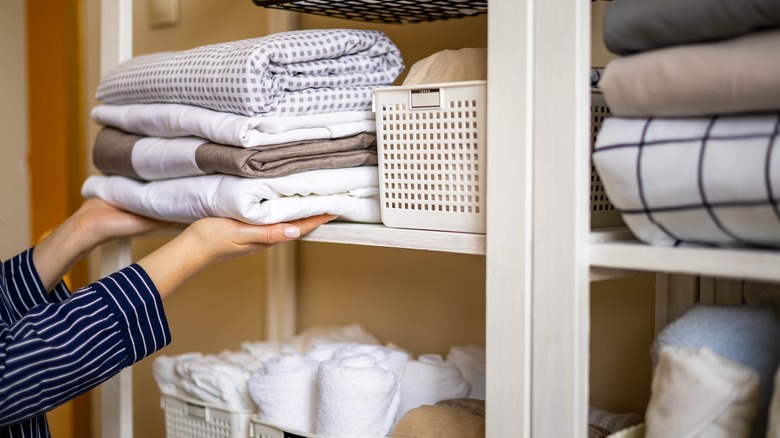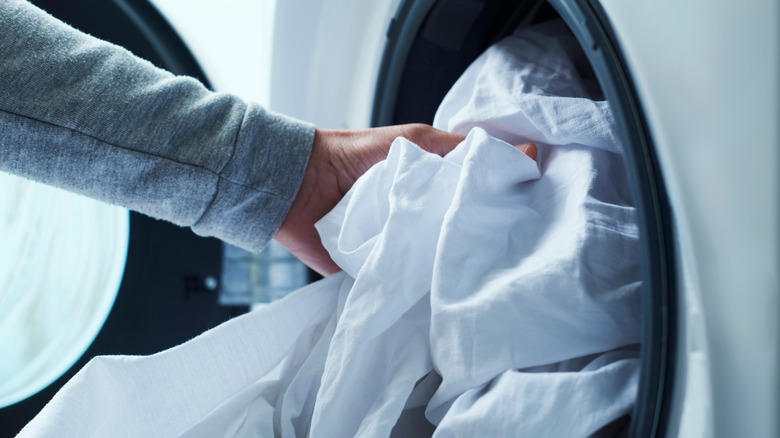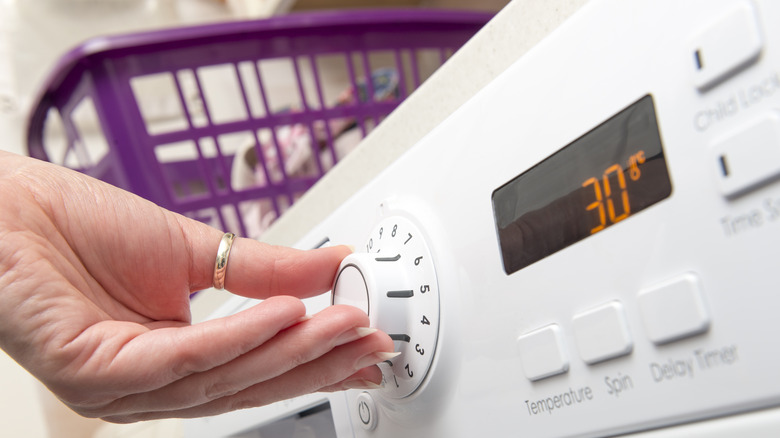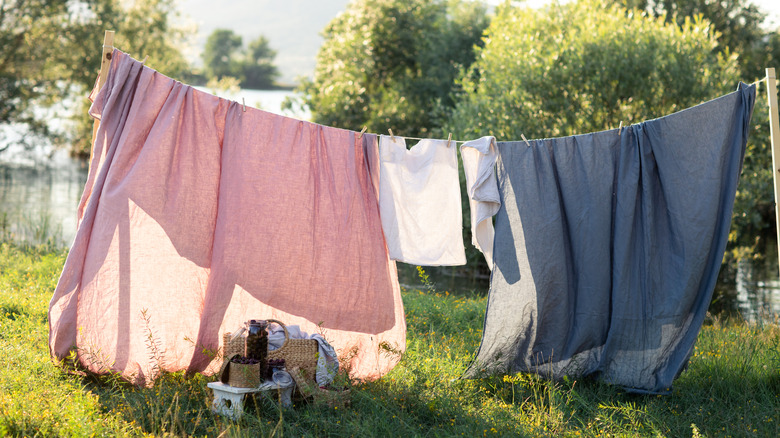4 Mistakes To Avoid When Washing Your Sheets
Top-quality bed sheets play a significant role in sleeping comfortably, so you should invest in them. According to Unwritten, premium sheets can help with allergies, deter bed bugs, and improve sleep cycles. Purchasing soft and long-lasting sheets is a wise decision since you will spend 26 years of your life sleeping or attempting to do so (via Dreams). Linen sheets, for example, are ventilating and moisture absorbing, but one of the most expensive materials for bed sheets due to their luxuriousness and high production costs.
Because of how much you are likely to spend on your sheets and bedding, it's essential to know how to take care of them to get value for your money. It's good to avoid stains and direct damage, but in any case, you must learn how to wash them properly. Even if laundry is your least favorite chore, it's rewarding when done right. Here are mistakes that you need to avoid when washing your sheets.
1. Not washing them frequently
How often do you wash your bedsheets? Sheets are usually one of the last things tackled when it comes to laundry. It's easy to forget them and let them linger a little too long before being changed because we feel lazy to switch them out. However, they need to be washed regularly and often. Your bedsheets should be washed weekly or every two weeks as a general rule of thumb. But they should be cleaned more frequently when other factors are involved, like excessive sweating, eating food in bed, or sleeping with pets.
Frequent washing and proper care help your sheets maintain their quality. They will feel fresh, and you won't have to worry about irritations due to dirt, via Tomorrow Magazine. It will be easier to maintain the frequency if you have a rotation of sheets and bedding to swap out as much as you need to. It's also important to note that brand-new bed sheets should be washed before you start using them.
2. Choosing the wrong setting
Knowing what setting to use for what type of material and garment significantly affects how long the quality lasts. Your underwear washing technique will differ from how you wash jackets, so you need to know the correct setting for whatever item you put in the machine. Some things to learn about include the water level, temperature, and strength of the wash and rinse cycles; you must also know the material type you're working with.
The care labels on your bed sheets should guide what setting to use. Even though sheets are big and take up space, Soak&Sleep advises that you use a standard setting that is also gentle instead of a heavy one, so the material doesn't get damaged. This setting is best if your sheets are made of linen, cotton, or other durable synthetics, says The Laundress. Soak&Sleep also recommends washing in warm temperatures (depending on the fabric) so that the heat handles the germs, dirt, and bodily oils.
3. Putting them in a full washer
When cleaning your bedsheets, it's recommended that you wash them separately instead of throwing them in with the other dirty laundry. In addition to allowing you to wash them on the correct setting, this gives your sheets enough room to cleanse well and avoid the risk of getting tangled and damaged while running with other items. While blankets and duvets are beddings, they still need to be washed separately from your sheets if putting them together will fill up the washer.
This method is especially beneficial for white sheets since staining and discoloration will be avoided. When washing fewer items by color, you can select the most suitable water temperature — hot for whites and cold for colors, via The Laundress. Drying in an overstuffed dryer is another mistake; to avoid this, put in fewer items so they can dry more evenly, says Soak&Sleep.
4. Drying them improperly
As you take care while washing your sheets, also be mindful of how you dry them. Some common drying mistakes include keeping them in the dryer for too long and running them with towels. Towels are heavier than bedsheets, so drying them together can lead to shrinkage since they will be in the dryer longer than necessary. Line drying is an excellent solution since it preserves the quality of your sheets and prevents shrinkage. Soak&Sleep recommends a mix of both air and machine drying for your sheets. Additional benefits of air drying your sheets include saving on energy consumption, which is good for the environment and your wallet!
Instead of running sheets through the dryer for a specific amount of time, a more helpful method is to dry them for 30-minute intervals, checking on them and detangling them until they're ready to be taken out, via In The Wash. Another tip is to dry them while they're still damp to eliminate creases. While it's tempting to dry on the heaviest setting so your laundry is ready faster, that heat can hasten the aging process of your sheets and also set any stains, per The Laundress.




